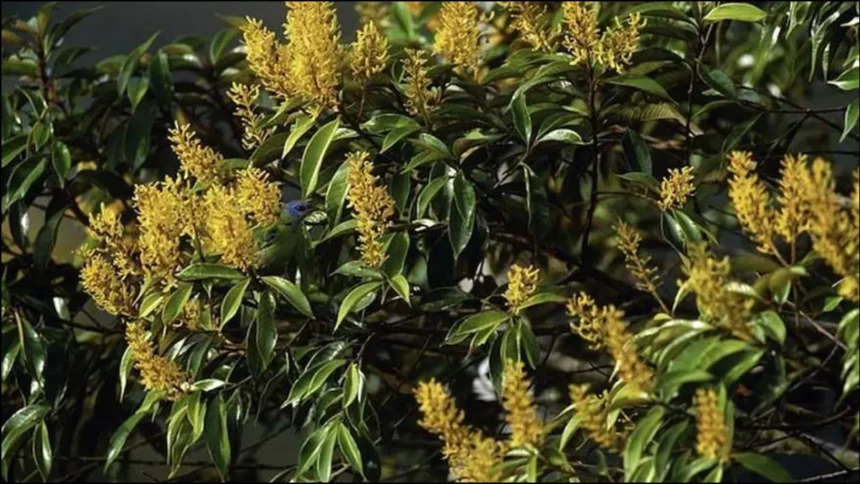Introduction:
Optical illusions have long fascinated human minds, presenting captivating images that challenge our perception of reality.
Among the plethora of optical illusions, the quest to find hidden images within complex patterns stands out as an enthralling exercise for the curious mind.
One such intriguing phenomenon is the “Bird in a Tree” optical illusion, which promises to reveal a hidden avian creature nestled within the branches of a seemingly ordinary tree.
In this article, we delve into the realm of optical illusions, unraveling the secrets behind this particular visual puzzle and exploring the fascinating mechanisms that underlie our perception.
The Fascination of Optical Illusions:
From ancient times to the modern era, optical illusions have captured the imagination of people across cultures and generations.
These captivating illusions play tricks on our visual perception, challenging our brains to decipher puzzling images that defy conventional understanding.
Whether it’s the famous “Rubin’s Vase,” the enigmatic “Necker Cube,” or the mesmerizing “Penrose Triangle,” optical illusions continue to intrigue and confound us, offering a glimpse into the complexities of human cognition.
The “Bird in a Tree” Optical Illusion:
Among the vast array of optical illusions, the “Bird in a Tree” stands as a remarkable example of hidden imagery concealed within a seemingly ordinary scene.
At first glance, the image appears to depict a dense thicket of branches against a backdrop of foliage.
However, upon closer inspection, keen observers may discern the subtle outlines of a bird camouflaged within the intricate patterns of the branches.
The challenge lies in identifying this concealed creature amidst the complexity of the scene, a task that promises to test the limits of perception and attention.
Unraveling the Mystery:
To understand the mechanics of the “Bird in a Tree” optical illusion, we must delve into the principles of visual perception and cognitive processing.
Our brains are adept at recognizing patterns and shapes, a capability that has evolved to help us navigate and interpret the world around us.
However, this inherent tendency to perceive meaningful forms can sometimes lead to misinterpretations, especially when confronted with ambiguous or deceptive stimuli.
In the case of the “Bird in a Tree” illusion, the hidden image relies on the Gestalt principles of perception, which emphasize the brain’s inclination to organize visual elements into cohesive wholes.
The branches of the tree, with their twisting contours and overlapping textures, create a complex visual field that challenges our ability to discern individual components.
Within this intricate framework, the silhouette of the bird emerges as a subtle yet discernible feature, exploiting the brain’s propensity to perceive familiar shapes within ambiguous contexts.
The Role of Attention and Focus:
Central to the success of uncovering the hidden bird is the viewer’s ability to direct attention and focus effectively.
In a world inundated with sensory stimuli, our attentional resources are finite, requiring us to prioritize relevant information while filtering out distractions.
When faced with the “Bird in a Tree” illusion, viewers must allocate their attention strategically, scanning the image for subtle cues that may betray the presence of the concealed creature.
Research in cognitive psychology has elucidated the mechanisms underlying selective attention, revealing the interplay between top-down processes driven by goals and expectations and bottom-up processes driven by salient sensory inputs.
In the context of the optical illusion, individuals who approach the task with a heightened awareness of the bird’s potential presence are more likely to detect its elusive form amidst the tangle of branches.
By leveraging prior knowledge and expectations, viewers can enhance their perceptual sensitivity and increase their chances of success in unraveling the mystery within the image.
The Nine-Second Challenge:
The claim that one can find the bird in a tree optical illusion in nine seconds adds an element of urgency and excitement to the visual puzzle.
While the time constraint may seem daunting, it serves to heighten the sense of anticipation and engagement, transforming the task into a thrilling race against the clock.
However, the key to success lies not merely in speed but in the strategic deployment of attention and perceptual acuity.
For some, the nine-second challenge may seem daunting, prompting feelings of pressure and anxiety as they frantically scour the image for any sign of the hidden bird.
However, for others, the time limit serves as a catalyst for focused attention, sharpening their senses and guiding their gaze with precision.
By adopting a systematic approach and maintaining a calm demeanor, participants can maximize their chances of meeting the nine-second deadline and experiencing the satisfaction of uncovering the concealed secret within the image.
Implications for Perception and Cognition:
Beyond the realm of entertainment, optical illusions such as the “Bird in a Tree” offer valuable insights into the workings of human perception and cognition.
By studying the ways in which our brains interpret visual information and construct mental representations of the world, researchers gain a deeper understanding of the fundamental processes that underlie human consciousness.
Moreover, optical illusions serve as powerful tools for investigating the mechanisms of attention, memory, and decision-making, shedding light on the complex interplay between bottom-up sensory inputs and top-down cognitive influences.
By manipulating the features of visual stimuli and observing how they influence perceptual judgments, scientists can uncover the underlying principles that govern our perception of reality.
Conclusion:
In the captivating world of optical illusions, the quest to find hidden images within complex patterns continues to captivate and intrigue us.
From the enigmatic allure of the “Bird in a Tree” illusion to the myriad other visual puzzles that challenge our perception, these optical wonders offer a tantalizing glimpse into the mysteries of the human mind.
Whether we approach them as playful diversions or serious scientific inquiries, optical illusions invite us to reconsider the nature of reality and the intricacies of our perceptual experience.
So, the next time you encounter a puzzling image that defies explanation, remember to look closely, focus your attention, and prepare to be amazed by the hidden wonders that lie beneath the surface.

